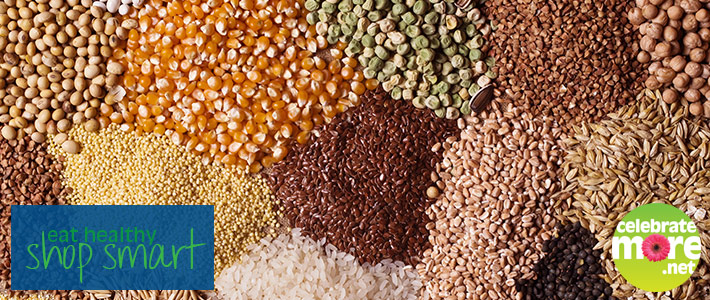The Whole Truth: Whole Grains
You choose wheat bread instead of white and you substitute rice for potatoes. The primary ingredient in the cereal you offer your family is oats. That’s all good, right?
Not necessarily.
Not all wheat breads, rice and oat cereals are created from whole grains, and the United States Department of Agriculture now recommends three one-ounce servings of whole grains per day.
Whole grains are the seeds of grasses that have been processed with the bran and germ intact. Whole grains deliver far more nutrients than refined grains, and more nutrients mean better health for you and your family.
Specifically, whole grains are high in fiber (you will feel full longer) and they are bursting with B vitamins and several minerals, including iron and magnesium. Recent studies show that eating whole grains lowers the risk for:
• heart disease
• high blood pressure
• insulin resistance
• colon cancer
Also, one study tracking the health of thousands of female nurses showed that women who do not eat whole grains outweigh those women who do.
At the grocery store, look for whole grain pastas and breads, and brown and wild rice. Other whole grains include barley, bulgur (cracked wheat), oatmeal, quinoa and buckwheat. Be sure to read food labels carefully. The whole grains will be listed among the first ingredients. Bread labels that boast of being multigrain, stone-ground or even 100% wheat, are likely not whole grain products, and neither are seven-grain crackers. Also, some brown breads are made with molasses, so don’t count on color alone to lead you to whole grain products.
Adding whole grains to your meals is easy, and many whole grain products make perfect partners for your favorite dishes:
• Do you have a favorite pasta dish? Try preparing it with whole grain fusilli or penne.
• Making vegetable soup? Add barley to the pot.
• Tabouli, made with fresh tomatoes, onion and parsley, depends on bulgur wheat.
• Served with veggie stir-fries, brown rice adds a nutty crunch.
• Build your veggie wrap on whole wheat tortillas.
• Mix up a flavorful pilaf by combining wild rice, brown rice and barley. A handful of dried cherries or chopped dried apricots will complement the satisfying flavor of the whole grains.
• Any recipe that calls for breadcrumbs will be enhanced when those crumbs come from whole grain bread.
• Need croutons to top off a tossed salad? Toast whole grain bread instead of reaching for packaged croutons.
• Rolled oats add fiber to homemade meatloaf.
• When making muffins, pancakes or cookies, use whole grain flour for half the total flour.
There’s more good news… popcorn is a whole grain! Popcorn makes a healthy snack for all ages, but remember to go easy on butter and salt. Do you catch yourself with your hand in the cereal box? Choose cereals made from whole oat flour and whole wheat flour, and look for granola made with whole grains. Pass up blueberry bagels in favor of whole grain.
It’s easy to include the goodness of whole grains into your diet. These simple solutions will have you thinking, “Three one-ounce servings of whole grains per day? No problem!”








